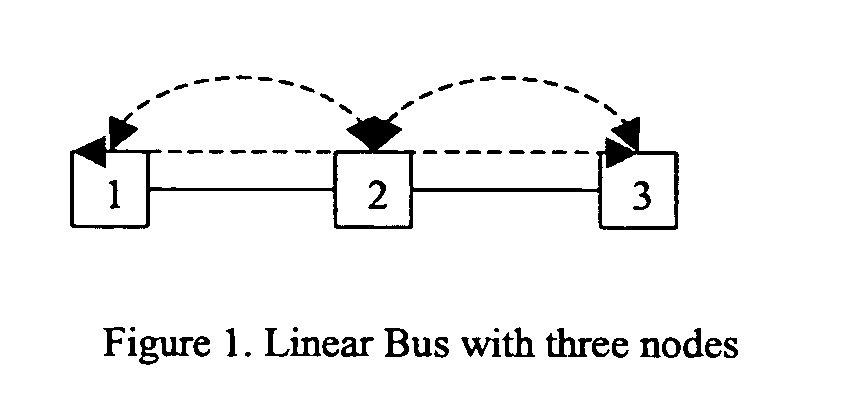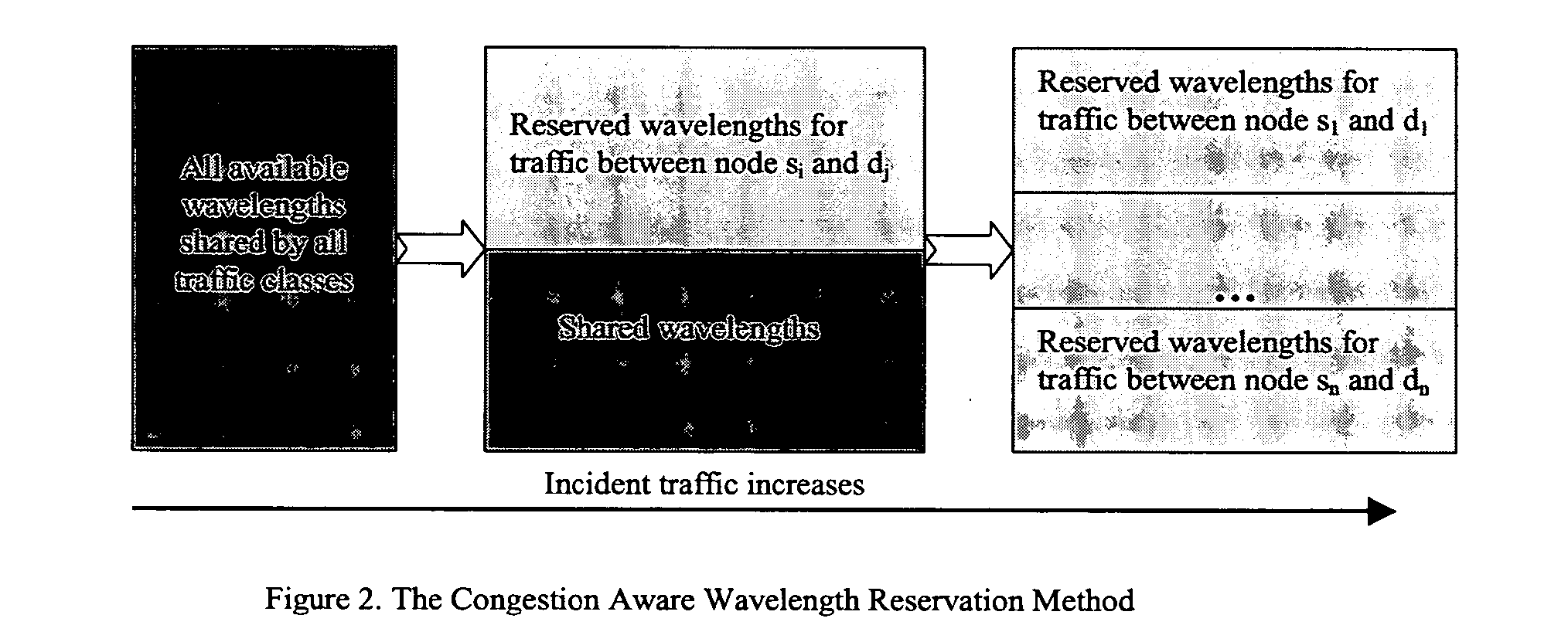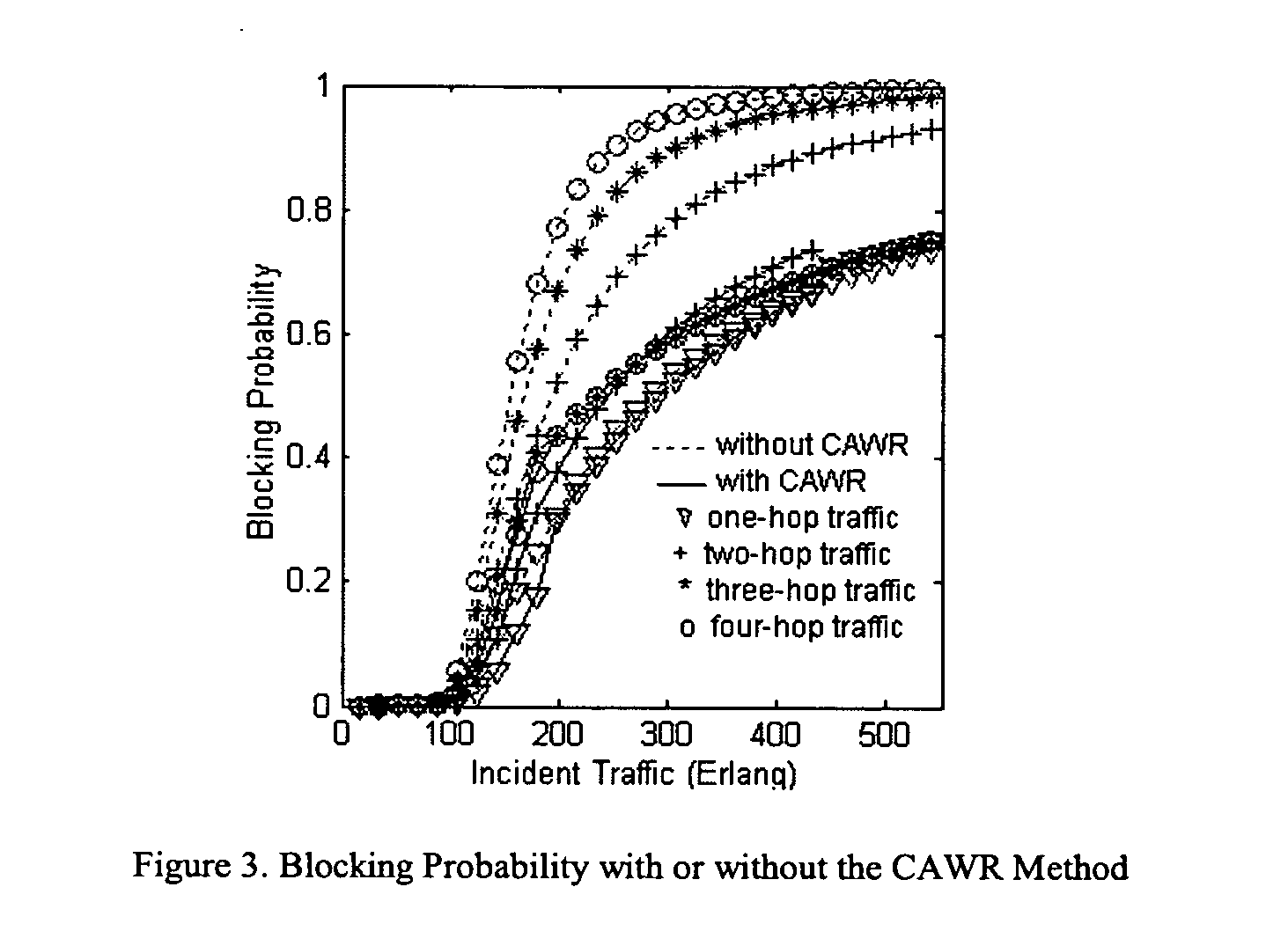Enhancing the traffic carrying capacity of telecommunication networks
- Summary
- Abstract
- Description
- Claims
- Application Information
AI Technical Summary
Problems solved by technology
Method used
Image
Examples
Example
III. NUMERICAL EXAMPLE
[0022] In this section, we consider a 9-node ring as an illustrative example with the following assumptions. [0023] A light-path is dynamically established and torn down in response to a random pattern of arriving connection requests and holding times. [0024] The connection requests are Poisson distributed. [0025] The holding time is exponentially distributed. [0026] Blocked traffic is lost. [0027] There is no blocking in the switching nodes. [0028] A wavelength is chosen at random among all available wavelengths for a particular class of service. [0029] The same set of wavelengths is in use on all physical links, and the number of wavelengths is 40. [0030] Traffic connection requests are uniformly distributed among all node pairs. [0031] There are wavelength converters in the network [0032] Probability of each link in a network is independent from each other [10]
[0033] Since we assume uniformly distributed traffic here, the wavelength reservation for any sour...
PUM
 Login to View More
Login to View More Abstract
Description
Claims
Application Information
 Login to View More
Login to View More - R&D
- Intellectual Property
- Life Sciences
- Materials
- Tech Scout
- Unparalleled Data Quality
- Higher Quality Content
- 60% Fewer Hallucinations
Browse by: Latest US Patents, China's latest patents, Technical Efficacy Thesaurus, Application Domain, Technology Topic, Popular Technical Reports.
© 2025 PatSnap. All rights reserved.Legal|Privacy policy|Modern Slavery Act Transparency Statement|Sitemap|About US| Contact US: help@patsnap.com



